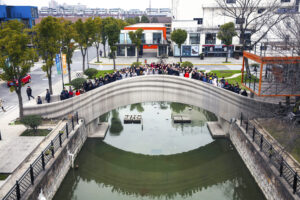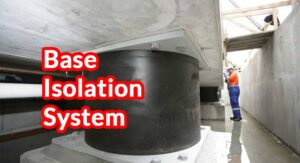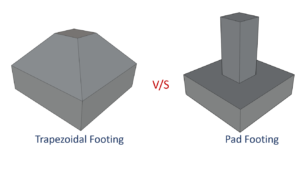
BUILDING STONES :
Stone is an essential and more permanent building material in construction than other natural building materials. Based on the type, stones can be used in buildings for flooring, roofing, masonry, paving roads and also as aggregates for concrete.
Most of the prehistoric monuments are built with natural stones as they remain stable with time. Before the advent of concrete, stones were highly preferred for heavy engineering works like bridge piers, harbour walls, seaside walls, and for facing works.
Stones for construction purposes are obtained by quarrying from solid massive rocks. The stones used for masonry construction should be hard, durable, tough, and should be free from weathered soft patches of material, cracks, and other defects that are responsible for the reduction of strength and durability.
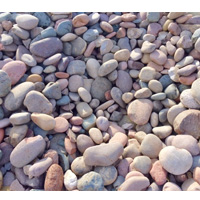
Based on Geology, stones or rocks are classified into three types:
- Igneous Rocks – Basalt, Trap, Andesite, Rhyolite, Diorite, Granite.
- Sedimentary Rocks – Lime stones, Dolomite and Sandstones.
- Metamorphic Rocks – Gneiss, Quartzite, Marble, Slate.
Types of Building Stones
Some of the common building stones which are used for different purposes in India are as follows:
Granite : –
It is a deep-seated igneous rock, which is hard, durable and available in various colours. It has a high value of crushing strength and is capable of bearing high weathering.

Granite is used for bridge components, retaining walls, stone columns, road metal, ballast for railways, foundation, stonework and for coarse aggregates in concrete. These stones can also be cut into slabs and polished to be used as floor slabs and stone facing slabs.
Granite is found in Maharashtra, Rajasthan, Uttar Pradesh, Madhya Pradesh, Punjab, Assam, Tamil Nadu, Karnataka and Kerala.
Basalt and Trap :
They are originated from igneous rocks in the absence of pressure by the rapid cooling of the magma

They have the same uses as granite. Deccan trap is a popular stone of this group in South India.
Limestone
It is a sedimentary rock formed by remnants of seaweeds and living organisms consolidated and cemented together. It contains a high percentage of calcium carbonate.

Limestone is used for flooring, roofing, pavements and as a base material for cement. It is found in Maharashtra, Andhra Pradesh, Punjab, Himachal Pradesh and Tamil Nadu.
Sandstone
This stone is another form of sedimentary rock formed by the action of mechanical sediments. It has a sandy structure which is low in strength and easy to dress

They are used for ornamental works, paving and as road metal. It is available in Madhya Pradesh, Rajasthan, Uttar Pradesh, Himachal Pradesh and Tamil Nadu.
Gneiss
It can be recognised by its elongated platy minerals usually mixed with mica and used in the same way as granite.

They can be used for flooring, pavement and not for major purposes because of its weakness. It is found in Karnataka, Andhra Pradesh, Tamil Nadu and Gujarat.
Marble
It is a metamorphic rock which can be easily cut and carved into different shapes. It is used for ornamental purposes, stone facing slabs, flooring, facing works etc.

It is found in Rajasthan, Gujarat and Andhra Pradesh.
Slate
It is a metamorphic rock which can be split easily and available in black colour. It is used for damp-proofing flooring and roofing.
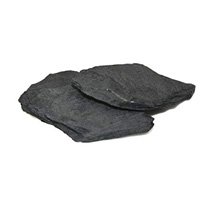
Quartzite
It is a metamorphic rock which is hard, brittle, crystalline and durable. It is difficult to work with and used in the same way as granite but not recommended for ornamental works as it is brittle.
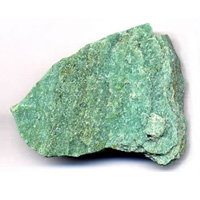
Laterite
It is decomposed from igneous rocks; occur in soft and hard varieties. It contains a high percentage of iron oxide and can be easily cut into blocks.
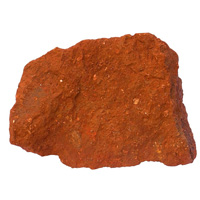
The soft variety is used for walls after curing while the hard blocks are used for paving the pathways.
Uses of Building Stones
The stones used for various types of works are as follows:
- Fine-grained granite and gneiss stones are used for Heavy engineering works such as building bridge piers, breakwaters, monuments, etc.
- Granite, quartzite and compact sandstones are used for masonry works in industrial areas exposed to smoke and fumes.
- Marble, granite and sandstone are used for facing work of buildings.
- Limestone and sandstone are used for general building works.
- Fine-grained granite, marble, and soft sandstone are used for Carvings and ornamental works.
- Compact limestone and sandstone are used for Fire-resistant masonry.
- Granite, quartzite stones are used in foundations of building in places with the high groundwater level.
- Marble, slate, sandstone and granite stones are used for floor pavings.


